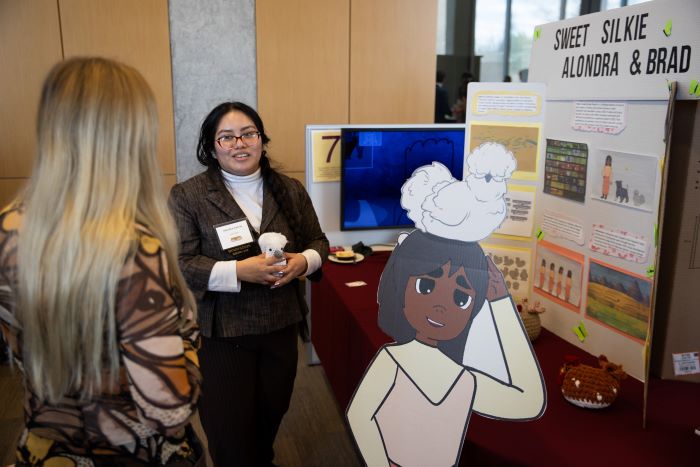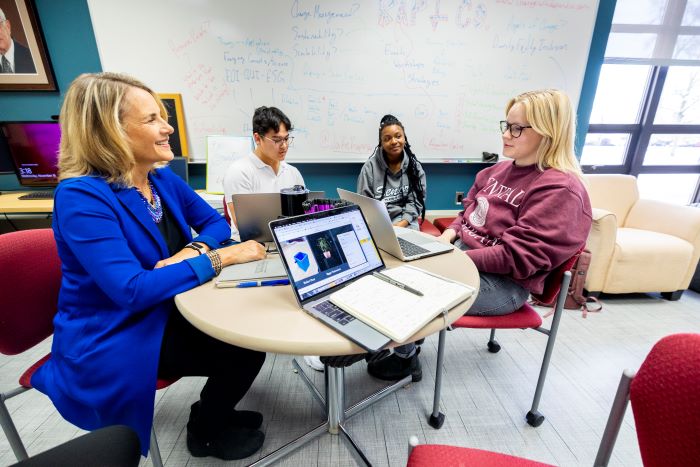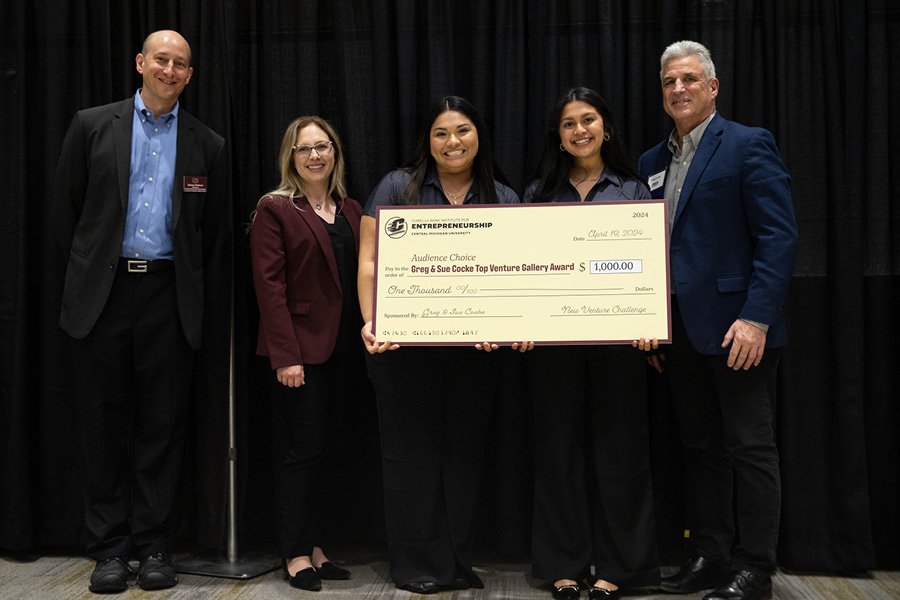
Start up
Passion. Potential. Pitches. Don't miss any of the 2025 New Venture Challenge excitement.
Tune in Friday, April 11 at 1 p.m. for great ideas and fierce competition. Then, join the judges, mentors, spectators and teams as they see who is going home with thousands of dollars in venture financing. The awards broadcast begins at 6:30 p.m. and one team will walk away as the overall best venture.
Central Michigan University’s College of Business Administration is the home of the Isabella Bank Institute for Entrepreneurship and the first Department of Entrepreneurship in the state of Michigan. We are a student-centric hub where experiential, curricular, and external entrepreneurial opportunities intersect.
Our mission is to maximize student success by fostering a campus-wide entrepreneurial mindset that promotes inter-disciplinary collaboration and the creation of new ventures.
We aim to create innovative programming, boost cross-campus and ecosystem collaboration and provide a comprehensive mentoring program.
Our institute provides extracurricular opportunities and is open to all undergraduate and graduate CMU students.
Are you interested in becoming an entrepreneur?
Every journey is unique. Explore the opportunities that interest you.
A collaboration between Central Michigan University researchers and a public health agency could help identify future disease outbreaks in rural communities.
The initiative began as researchers participated in the Centers for Disease Control’s National Wastewater Surveillance System, which was created during the early days of the COVID-19 pandemic.
CMU was one of 20 labs across the state that collected wastewater samples and analyzed them to gauge the presence of the SARS-CoV-2 virus. The higher the virus concentration, the more it indicated community spread.
CMU’s team was uniquely positioned during the pandemic to monitor small, rural communities, said Michael Conway, a CMU microbiologist. While other network partners monitored wastewater in large municipalities, CMU was one that collected samples from smaller communities.
An unanswered question was whether samples from small communities could provide usable data. Wastewater monitoring offered significant advantages over data collected from physicians, as it didn’t rely on people seeking health care and offered earlier detection.
During the pandemic, wastewater monitoring provided a warning of disease spread, enabling detection 4-6 days before healthcare providers observed an increase in patients, according to the CDC’s wastewater surveillance webpage.
“It was important from an equity standpoint to know if wastewater monitoring works in small communities,” Conway said.
Data provided by the Central Michigan District Health Department helped make that happen.
CMDHD provided CMU’s researchers with case data down to the zip code level, Conway said. That made it useful in knowing whether wastewater monitoring data and reported case data produced the same result.
The pandemic wasn’t the first time that wastewater monitoring provided clues into how a virus moved through a population. In the 1940s, scientists used it to monitor the virus that causes polio.
It was also used during the early days of the COVID-19 pandemic when health officials in Italy and France reported elevated levels of SARS-CoV-2 virus in wastewater samples before the first official diagnosis.
It’s the future of wastewater monitoring that is particularly intriguing.
While the CDC started the national wastewater surveillance system for the COVID-19 pandemic, it recognizes its real potential for identifying other diseases, such as influenza, E. coli, norovirus and antibiotic-resistant bacteria and fungi. It can even be used to detect the presence of illegal drugs in wastewater.

Explore special opportunities to learn new skills and travel the world.

Present your venture and win BIG at the New Venture Challenge.

Boost your entrepreneurial skills through our workshops, mentor meetups and pitch competitions.

Learn about the entrepreneurship makerspace on campus in Grawn Hall.

Present a 2-minute pitch at the Make-A-Pitch Competition and you could win prizes and bragging rights!

Connect with mentors and faculty who are here to support the next generation of CMU entrepreneurs.

Are you a CMU alum looking to support CMU student entrepreneurs? Learn how you can support or donate to the Entrepreneurship Institute.